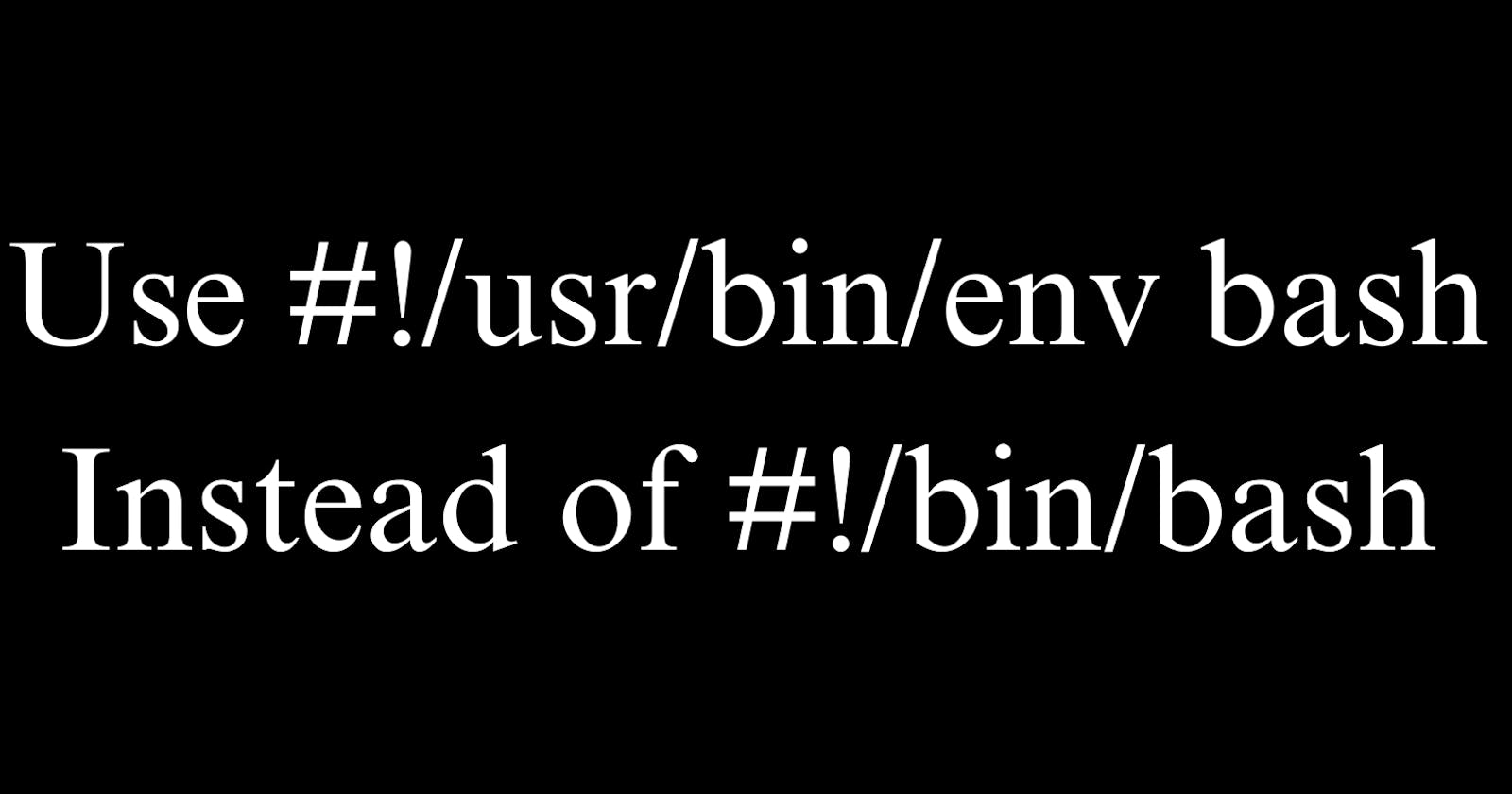The Advantage of Using #!/usr/bin/env bash Over #!/bin/bash
Writing Cross-Compatible Bash Scripts with the Env Shebang
Shebang lines at the top of bash scripts allow you to specify the interpreter path to use when executing the script. There are two common approaches - using #!/bin/bash or #!/usr/bin/env bash. The latter provides significant advantages in terms of portability and flexibility across systems.
How the Shebang Line Works
The shebang line is the first line in a bash script starting with #! When you execute a script, the system checks this line to know which interpreter to use.
For example:
#!/bin/bash
echo "Hello World"
Here we are explicitly specifying the path /bin/bash as the interpreter.
The env command allows you to avoid hardcoding the interpreter path. It searches the PATH environment variable to locate the first match.
For example:
#!/usr/bin/env bash
echo "Hello World"
Now the env call will find bash on the PATH.
Advantages of #!/usr/bin/env bash
Using #!/usr/bin/env bash provides several notable advantages:
More Portable Across Systems
The env shebang allows your bash scripts to reliably run across different operating systems. By dynamically searching the PATH, you avoid hardcoding assumptions about the bash's location.
For example, #!/usr/bin/env bash will work correctly on both:
# Ubuntu
which bash
/bin/bash
# Fedora
which bash
/usr/bin/bash
But #!/bin/bash would fail on Fedora since bash is not at /bin/bash.
Works Across Linux Distributions
Different Linux distros may install bash to different locations. Using #!/usr/bin/env bash prevents issues when running your script on another distro where bash is not at the assumed location.
For example, #!/bin/bash would fail on Debian if bash was moved to /usr/bin/bash. With #!/usr/bin/env bash the script still runs.
Avoids Renaming/Moving Issues
If the bash executable is renamed or moved on a system, your shebang line will still find it without issues:
# Bash renamed
which bash
/bin/bash2
#!/usr/bin/env bash still works!
But with #!/bin/bash, the hardcoded name/path could easily break.
Handles Non-Standard Bash Locations
Some systems may use non-standard bash locations like /usr/local/bin/bash. #!/usr/bin/env bash handles these cases seamlessly while #!/bin/bash would likely fail.
Avoids Permission Issues
The env command may avoid permission errors in some rare cases when running scripts as a non-privileged user who can't access the system binaries directory.
Downsides of #!/usr/bin/env bash
Slight performance hit from invoking env to search PATH
Relies on PATH being set correctly to locate the bash
These downsides are usually minor compared to the gained flexibility.
Recommendations for Use
In general, prefer #!/usr/bin/env bash over #!/bin/bash, especially for scripts intended for portability and public distribution. It will maximize compatibility across environments.
For simple personal scripts only running on your own systems, #!/bin/bash may suffice. But it's a best practice to use the env shebang for wider compatibility.
The #!/usr/bin/env bash approach provides excellent insurance that your bash scripts will reliably work across different systems out of the box. The slight tradeoff in performance is worth avoiding potentially obscure issues down the line.
